Knog Celebrates Two Shining Decades of Being Different and Unboring
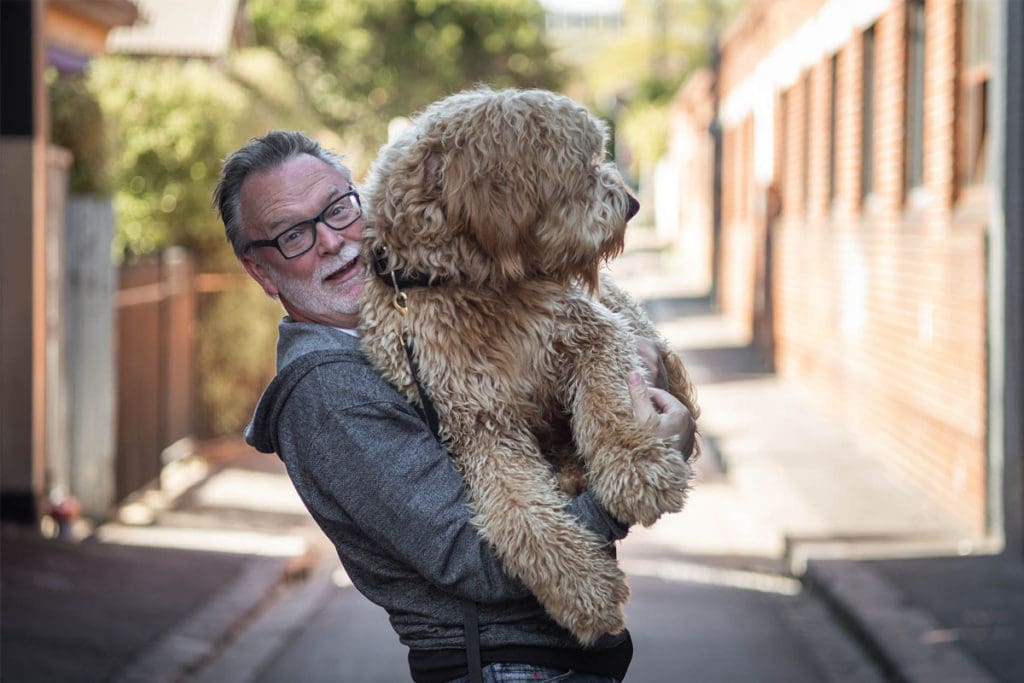
Melbourne, Victoria
A global ground breaker in bicycle lighting and accessory design, Melbourne’s Knog, this month celebrates its 20th anniversary – two decades of shaking things up and generating its share of controversy.
The company has shone a path for many brands in the industry, as it has established strong markets in over 45 countries and built an annual turnover of more than $25 million.
But while many companies have since replicated Knog’s approach to accessory design and promotion, Knog’s own early development was a decidedly laissez-faire affair. It was driven largely by a simple desire to be different and “unboring”, and they continue to be central motivations.
When Hugo Davidson registered the business on his birthday, 20 May 2002, he was motivated simply by the joy of design – and to make some money – without really knowing what he wanted to create.
He was already busy with his design firm, Catalyst Design Group, which he had launched 17 years earlier.
Hugo says he essentially started Knog as a “hobby … another opportunity for creativity.
“It has since flipped completely and now Knog is the be-all-and-end-all. But back then, who would have thought we would still be doing this 20 years later,” he quipped.
Stumbling Onto Cycling
In fact when Knog was still an idea, Hugo didn’t know what industry he wanted it to focus on and he stumbled onto cycling by chance.
One of his clients at Catalyst Design Group had a son who’d injured his face in a bicycle crash and the father wanted to produce a full-face polystyrene helmet.
While the idea was ultimately scrapped by the client – and advice Hugo received from industry folk about the competitiveness of the helmet market – it sowed the seeds for Hugo and his Catalyst partner Mal McKechnie.
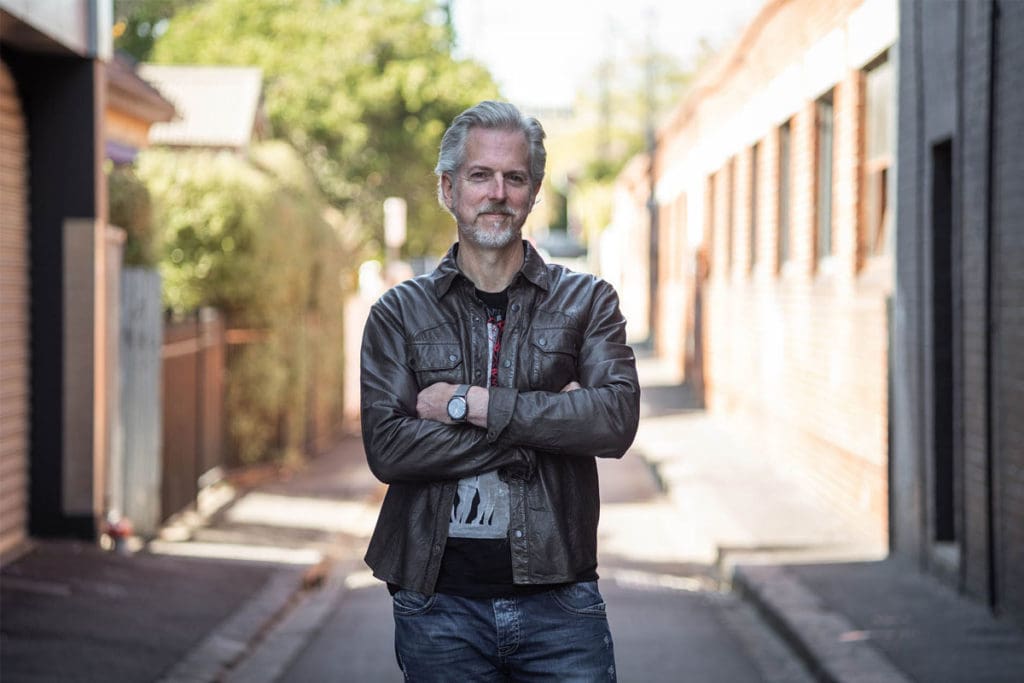
“We had already registered the company and it left us wondering what we were going to do,” Hugo explained.
“We liked the fact people in the bike industry did it because they were passionate.
“We had been working with tech industries, which were rife with venture capitalists and sharks, and we had been working with supermarkets, which was boring as hell.
“It was an easy decision. Cycling was an area where we could have fun and encourage people to ride bikes, and that felt good.”
Off the Top of Their Noggins
Initial planning for the full-faced helmet also helped spawn the company’s name.
“When we were searching for a business name, we started with Noggin (the Australian slang for head or brains),” he said.
“Then we wanted a shorter name so it would work well with a url.
“We added a silent ‘k’ because it looked kind of Scandinavian and we didn’t want to be associated with Australia because we were worried it would pigeonhole us.”
Knog’s first cycling products included clothes, shoes, gloves and a lot of luggage.
“Being new to the industry, we had no understanding of what would work. We just wanted to express ourselves through design,”
he said.
“It didn’t really matter what the uptake would be. It was more like, ‘wow, look at those shoes. Let’s see if we can make that into a cycling shoe.
“We would make 1,000 of them and then try to work out how we would sell them.”
Tadpole Spawns New Light Direction
Among those initial products was Knog’s first bike light, the Tadpole, which plugged into the end of the handbar and had both an LED light to shine forwards and a red light at the back.
It was a breakthrough in their quest to create something new and escalated their interest in the bike industry.
“We thought ‘it’s going to be really safety orientated and everyone will love it,” Hugo said.
“The lighting category at that stage was very generic – Chinese, three little 5mm LEDs that sat under some plastic and with batteries. Other brands were still using halogen and NiCad batteries. It was low-tech and not very inspiring.
“We hocked our houses, made a prototype, then raced around the world on my frequent flier points”
with this light and a few samples of our gloves and bags made from reflective 3M material.”
Ultimately, retail sales of the Tadpole were low but it had set a course for Knog.
“We had been looking at all sort of different industries – sex toys, baby products, gardening products – but now we realised the cycling industry was an area where we could make a lot of difference,” Hugo reflected.
“It was an exciting industry with a lot of opportunities. Also, one of our designers worked in a bike store and he said ‘you won’t believe how many lights we sell’.
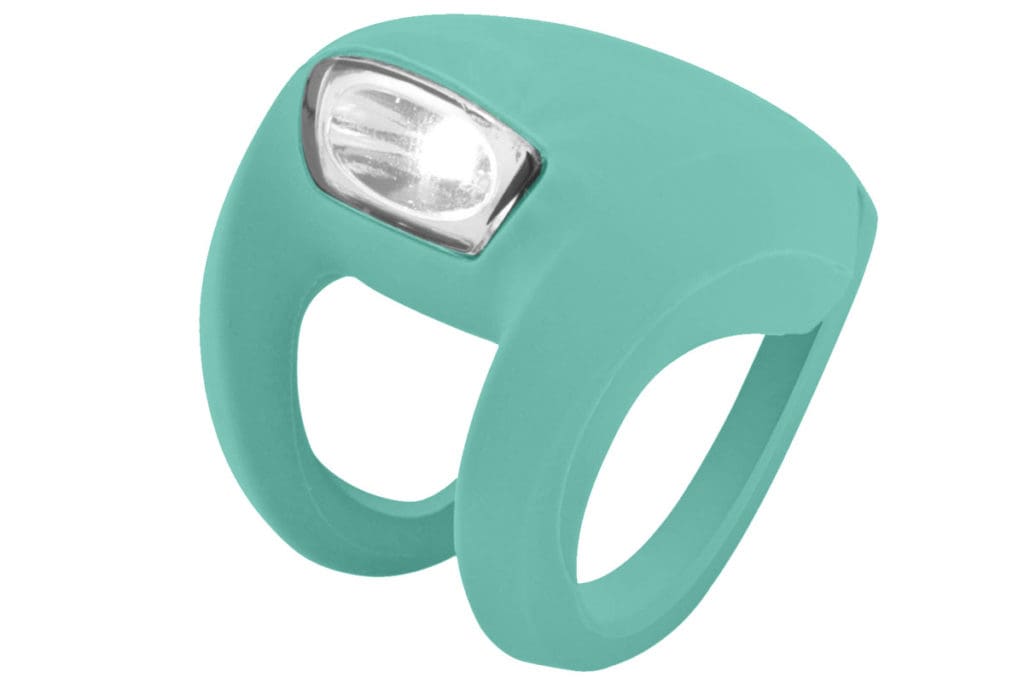
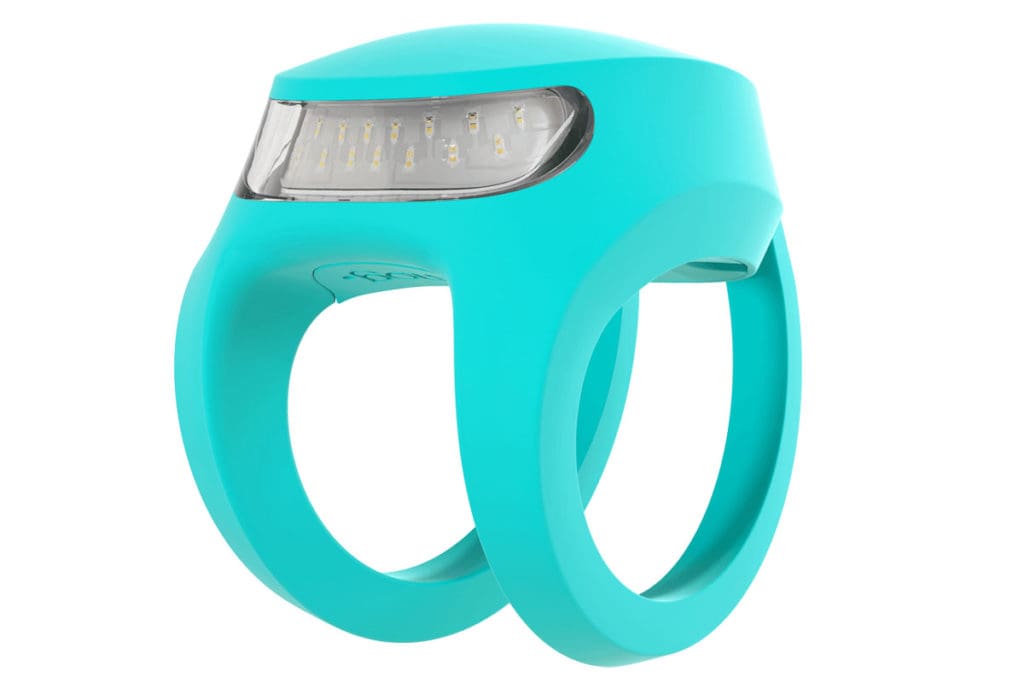
Global Perspective
Mal and Hugo’s experience with the Tadpole also formed their determination to be a global player.
Hugo had initially taken the Tadpole prototype to fellow Melbourne company Bikecorp.
“By the time I’d returned to the office, I’d received a fax ordering 5,000 units,” he said.
“They had a partner company in Japan and we thought, based on their population, they might be able to do 15,000 units.”
Mal and Hugo had decided from the outset that Australia’s cycling market was not big enough to sustain a business with a very specific, designer niche.
Australia currently represents just over five percent of Knog’s market.
The company took its products to Taiwan’s international bicycle fair in the early 2000s – “it was either 2003 or 2004” – and picked up distributors in 16 countries.
“Each of them said ‘what a breath of fresh air, they’re unlike anything we have seen’.
“And that became our mantra.
“If we can’t do things differently, we won’t do them.”
“Now a lot of companies are applying similar approaches to us in terms of design and marketing.”
In the mid 2000s, Knog’s distributors started telling them to forget about producing clothing and shoes because they are hard to sell.
Knog’s designer bags had attracted plenty of attention, including orders from companies such as Cannondale, Scott and Giant to produce ranges they could incorporate into their brands.
“However, the distributors had warehouses full of beautiful bags, while lights were their biggest sellers,” Hugo said.
“My heart was telling me the complete opposite. I always struggled with products reaching end of life and my response was usually ‘we’re just not marketing them properly’.
“But as the business has matured, I get shouted down and have to sit the corner and cool off,” he joked.
“And that advice has been correct. We have gone through process of learning what we really are good at.
“We now have a range that is unique.
“By focusing on lights, we found we could just get better with our designs. It became clear the optics and technology required was not something we could develop overnight and every time you did another product, they got better and better.
“We had this incredible brains trust of intellectual property in this area.”
The Frog is Born
Knog developed its ‘trademark’ Frog light in 2006 and has sold 10 million of the flexible silicon light.
The company is about to release the next generation Frog and Hugo, with his strong attachments to Knog designs, is glad the business is now at the point where it can give its products new life by upgrading and reimagining them.
“Much of the fun is looking at the latest technology and working out how we can adapt it into our products. We have always been new adopters of technology,” he explained.
“There have now been half a dozen iterations of LED lighting, to the point where it is so efficient and so bright.”
Knog’s reputation for innovation also extended to its marketing, which initially was very much about shock and awe.
“Our first marketing guy thought it should be ‘sexy urban bike’. It was nothing about sport and going fast,” he confided.
“It was girls kissing girls, kids getting drunk. It was an innovation back then. We tried to push things a bit and it polarised a lot of people.
“It was natural for me and I had fun with it as we set up initial ideas of what our brand should be.
“As the company has matured – just a little – we had to modernise how we portrayed the brand over the years. While we had the hipsters and young urban commuters on board, everyone who was into road cycling and mountain biking through we were off the planet. It was not a brand they could associate with.
“We really had to modify our behaviour. We realised we can be just as relevant without pushing people’s faces in it,” he continued.
“Now issues of sustainability are key and we are very much about that cradle to the grave approach to product design and packaging.
“They are just as important to our values now as ‘sexy urban bike’ was back in the days when we were young and insolent.”
Anniversary Celebrations
Knog has a series of initiatives planned to celebrate its 20th anniversary.
Hugo and Mal are planning a large celebration with their peers at this year’s Eurobike in July, followed by a special instalment of the company’s national sales meetings, taking around 120 industry people to Thailand in November.
“We have them every three or four years and they have become big events. We typically take the 20 odd people we have working here in Australia, as well as our best distributors in each country and a number of guest speakers,” Hugo said.
“In our early days it was essentially one big party but now it’s several highly valuable days of sharing knowledge.”
Knog’s vision for the next 20 years?
“World domination,” Hugo jokes.
However, Knog is serious about improving its promotion.
“Even though we are 20 years old, we are still a long way from having the incredible presence in the markets that matter,” Hugo explained.
“We are doing a lot more to make ourselves better known in each of our markets.
“Until now, our growth really has been organic. But recently we have been benchmarking ourselves against what other companies are doing and we realise if we don’t change the way we work to market ourselves, we will be left behind.”
He said diversification is also important for Knog to prosper, including grasping opportunities provided by the rise of e-bikes.
“That has placed pressure on us because a lot of our products tend to be designed for non-electric bikes,” he revealed.
“Now we are developing a whole range of products specifically for e-bikes.
“There’s a lot of opportunities for our technology in other areas.”
Security Through Diversification
Knog is revisiting the security market and will soon release a simple Scout alarm and tracker that works with Apple’s Find My network and Bluetooth tracking. The Scout is designed to attach to and locate everything from bikes and skateboards, to tradies’ tool boxes.
“Samples are being shown to retailers in about 45 countries and it will be released near the end of June,” Hugo said.
“We’re looking to extend our technology so it’s ‘urban tech’ and not just lighting.
“We did bike locks for a long time and we might return there in the near future.
“We were about to launch back into them before Covid. But without being able to travel during the past two and a half years, finding suitable suppliers was impossible, so we went back to focusing on the products we could do with our existing suppliers.”
Knog is also moving more broadly into outdoor products, including headlamps that borrow a lot of their design and construction methods from the Frog.
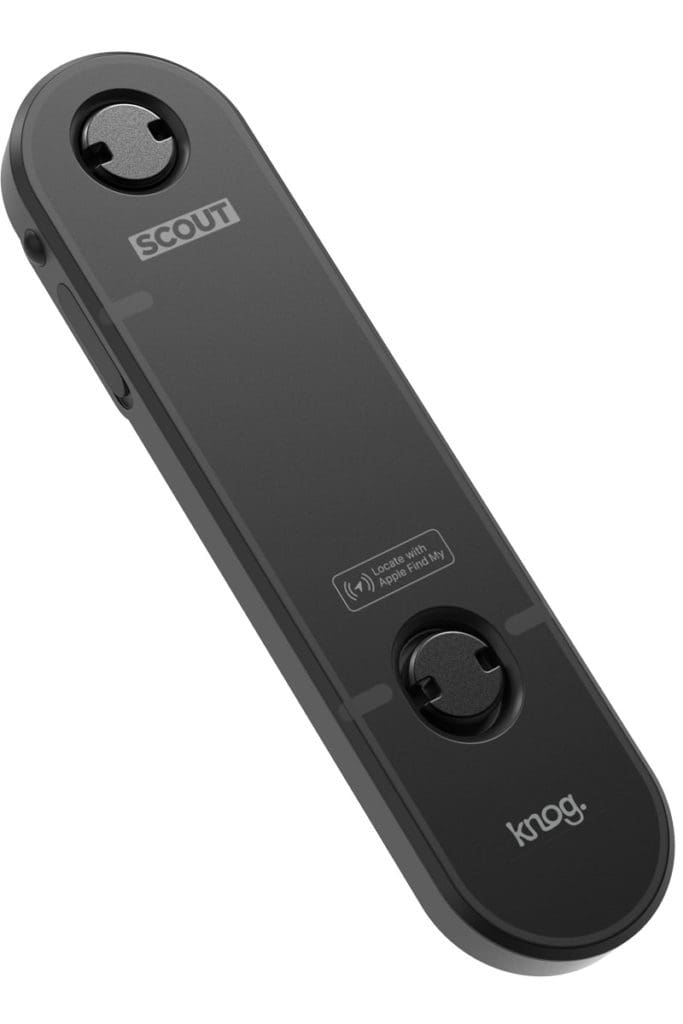
Torches now sit alongside camping lanterns and folding solar panels in the range, all with modern design elements.
The divergence into outdoor products has also brought a new approach to marketing for Knog. While it remains dedicated to working with distributors for its cycling products, Knog is preparing to go direct to consumers with the outdoor range.
“In Australia, we will be working with Phoenix Leisure Group because they do a great job with products such as Macpac, but we will be going direct to consumer in Europe,” Hugo explained.
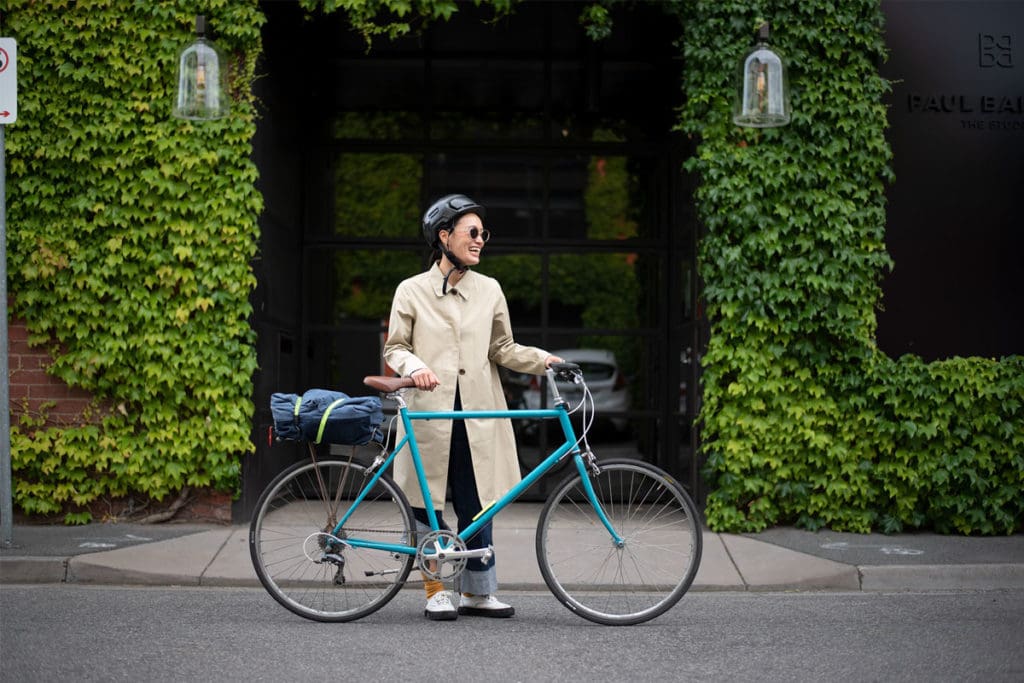
“We are seeing how business is changing around the world and we have to become more familiar with the commerce options. It’s an exciting opportunity.
“While we are celebrating 20 years, if anything, I feel we are just beginning.”
“It’s a strange feeling but I think we have a whole lot of opportunities to develop new products,” he said.
“We can reinvent ourselves and keep on building.”

Well done Mal and Hugo. The whole design team of Knog and Catalyst learnt so much working with you as we developed the ideas. You launched some great products and helped with some amazing design careers also. Thank you both for life long lessons around how to manage a business startup, how to be agile and what it takes to achieve really good product design outcomes, all the best.
Nice article Scott. We Love these guys at SCV. Congratulations and happy anniversary Knog 👍🏻
Thanks Stuart. It was a fun article to write.
This story is disappointingly short of mentions of Harry the dog 🙂
What even is he, besides floofy AF? How old is he? What’s his role in the company?
Good points, well made, John. Rather than selling him short, we thought Harry should receive his own article. We’re just not sure when we’ll get a chance to compile this epic sequel.